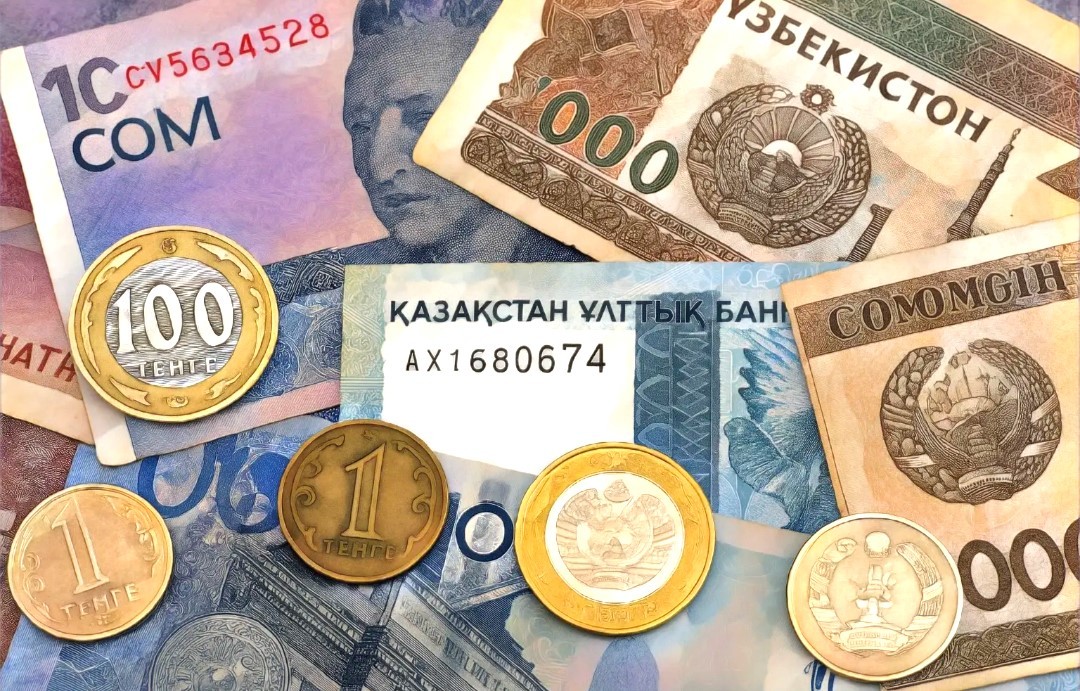Navigating debt and trade: Data show persistent debt challenges for developing countries – World Bank Blogs

Report on External Debt and Export Performance in Low- and Middle-Income Countries and Implications for Sustainable Development Goals
Introduction: Economic Volatility and the 2030 Agenda
The post-pandemic economic landscape for Low- and Middle-Income Countries (LMICs) presents a divergent outlook, with significant implications for the achievement of the Sustainable Development Goals (SDGs). The ability of these nations to manage rising external debt while leveraging export earnings is critical to advancing SDG 8 (Decent Work and Economic Growth) and SDG 17 (Partnerships for the Goals). The current economic fragmentation creates a complex environment where long-term sustainability is challenged by trade volatility and debt burdens.
Challenges for Vulnerable Economies: A Setback for SDG 1 and SDG 10
Economically vulnerable nations, such as International Development Association (IDA) borrowers, face acute challenges that threaten progress on SDG 1 (No Poverty) and exacerbate global disparities, undermining SDG 10 (Reduced Inequalities). The case of Bangladesh illustrates this trend:
- Heavily reliant on textile exports, the nation saw a 28 percent drop in export revenue in 2020.
- Total outstanding debt increased from $74 billion in 2019 to $101 billion in 2023.
- This combination caused the debt-to-export ratio to surge from a pre-pandemic level of 138 percent to 190 percent in 2020.
- Despite some recovery, the ratio remained elevated at 171 percent in 2023, indicating persistent economic stress that hinders sustainable development.
Export Recovery in Larger Economies: Progress Toward SDG 8
In contrast, several larger LMIC economies have demonstrated robust recovery, aligning with the objectives of SDG 8 (Decent Work and Economic Growth) and SDG 17.11 (Significantly increase the exports of developing countries). Export earnings for the top nine LMIC exporters (excluding China) climbed 33 percent between 2019 and 2023. India and Vietnam have been key drivers of this recovery.
- India: Achieved a 57 percent growth in exports from 2020 to 2023, rising from $507 billion to $811 billion. This strong performance stabilized its debt-to-export ratio at 80 percent in 2023, showcasing resilience in the face of rising external debt.
- Vietnam: Successfully lowered its debt-to-export ratio by 9 percentage points to 37 percent in 2023. This was accomplished despite accumulating significant new private-sector debt, reflecting effective economic management in pursuit of sustainable growth.
Overall Assessment: A Divergent Path to Sustainable Development
The post-pandemic period reveals a dual-track recovery among LMICs. While many larger economies are experiencing a healthy rebound in export earnings, contributing positively to their economic outlook, smaller and more vulnerable nations continue to face significant headwinds. This divergence raises concerns about increasing inequality (SDG 10) and threatens the long-term economic health and sustainability of the most at-risk countries. Navigating global trade volatility while managing high debt levels is a critical challenge for the entire developing world.
Strengthening Global Partnerships (SDG 17) for Enhanced Resilience
To foster universal progress toward the 2030 Agenda, strengthening the resilience of all LMICs is paramount. This requires enhanced adaptability to global economic shifts and robust frameworks for debt management, directly supporting the aims of SDG 17 (Partnerships for the Goals). The World Bank provides critical resources to support policymakers in this endeavor, promoting transparency and informed decision-making.
- The International Debt Report (IDR) offers monitoring of aggregate and country-specific external debt trends in LMICs.
- Publicly accessible data is available through the DataBank and online statistical tables to support analysts and policymakers.
1. Which SDGs are addressed or connected to the issues highlighted in the article?
The article primarily addresses issues related to economic growth, international trade, and debt sustainability in Low and Middle-Income Countries (LMICs). Based on this focus, the following Sustainable Development Goals (SDGs) are relevant:
- SDG 8: Decent Work and Economic Growth – The article’s core theme is the economic performance of LMICs, focusing on export growth and recovery post-pandemic, which are crucial drivers of overall economic growth.
- SDG 17: Partnerships for the Goals – The discussion revolves around international financial dynamics, including external debt, trade between nations, and the role of international institutions like the World Bank in monitoring these aspects. This directly relates to strengthening the means of implementation and global partnerships for sustainable development.
- SDG 10: Reduced Inequalities – The article highlights the disparity in economic recovery among LMICs, noting that “many larger economies have experienced a healthy rebound” while “others continue to face significant challenges.” This points to the growing inequality in economic resilience and capacity between nations.
2. What specific targets under those SDGs can be identified based on the article’s content?
Several specific targets can be identified by analyzing the economic issues discussed in the article:
SDG 8: Decent Work and Economic Growth
- Target 8.1: Sustain per capita economic growth in accordance with national circumstances. The article’s discussion of export growth in countries like India (57% growth from 2020-2023) and Vietnam, and the overall 33% climb in export earnings for top LMICs, directly relates to achieving economic growth. Exports are a key component of a nation’s Gross Domestic Product (GDP).
SDG 17: Partnerships for the Goals
- Target 17.4: Assist developing countries in attaining long-term debt sustainability. This is the most prominent target in the article. The text is centered on the challenges of managing debt, citing the increase in Bangladesh’s total debt to $101 billion in 2023 and its soaring debt-to-export ratio. The entire analysis of debt levels versus export earnings is a direct examination of debt sustainability.
- Target 17.11: Significantly increase the exports of developing countries. The article provides concrete data on this target, mentioning that exports for the top nine LMICs (excluding China) “climbed 33 percent from 2019 to 2023.” It also details the significant export growth in India and the recovery in Vietnam, contrasting it with the 28% drop in Bangladesh’s exports in 2020.
SDG 10: Reduced Inequalities
- Target 10.a: Implement the principle of special and differential treatment for developing countries, in particular least developed countries. The article implicitly addresses this by highlighting the specific struggles of Bangladesh, an IDA borrower and a Least Developed Country (LDC), whose debt-to-export ratio remains “significantly higher than its pre-pandemic level,” contrasting its situation with the more robust recovery of larger LMIC economies like India and Mexico.
3. Are there any indicators mentioned or implied in the article that can be used to measure progress towards the identified targets?
Yes, the article provides several specific quantitative metrics that align with official or proxy indicators for the identified targets.
Indicators for SDG 17 Targets
- For Target 17.4 (Debt Sustainability), the article uses a key indicator: the debt-to-export ratio. This is a direct measure of a country’s ability to service its debt through its export earnings. The article provides precise figures:
- Bangladesh: 190% in 2020, 171% in 2023.
- India: 80% in 2023.
- Vietnam: 37% in 2023.
- Another indicator mentioned is total external debt outstanding, with the article stating Bangladesh’s debt increased from “$74 billion in 2019 to $101 billion in 2023.”
- For Target 17.11 (Increase Exports), the article uses two clear indicators:
- Total value of exports: India’s exports grew from “$507 billion to $811 billion.”
- Percentage growth of exports: The article notes a “28 percent” drop for Bangladesh in 2020, a “33 percent” climb for top LMICs from 2019-2023, and a “57 percent” growth for India from 2020-2023.
Indicators for SDG 8 Target
- For Target 8.1 (Economic Growth), while not mentioning GDP directly, the article uses growth in export earnings as a strong proxy indicator for economic growth. The data on the value and percentage growth of exports for India, Vietnam, and other LMICs serves as a measure of this economic activity.
4. Create a table with three columns titled ‘SDGs, Targets and Indicators” to present the findings from analyzing the article. In this table, list the Sustainable Development Goals (SDGs), their corresponding targets, and the specific indicators identified in the article.
| SDGs | Targets | Indicators |
|---|---|---|
| SDG 17: Partnerships for the Goals | 17.4: Attain long-term debt sustainability. |
|
| SDG 17: Partnerships for the Goals | 17.11: Significantly increase the exports of developing countries. |
|
| SDG 8: Decent Work and Economic Growth | 8.1: Sustain per capita economic growth. |
|
| SDG 10: Reduced Inequalities | 10.a: Implement special and differential treatment for developing countries, in particular LDCs. |
|
Source: blogs.worldbank.org
What is Your Reaction?
 Like
0
Like
0
 Dislike
0
Dislike
0
 Love
0
Love
0
 Funny
0
Funny
0
 Angry
0
Angry
0
 Sad
0
Sad
0
 Wow
0
Wow
0



























;Resize=805#)



















































